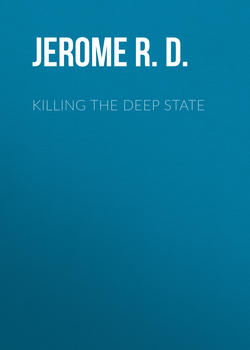Читать книгу Killing the Deep State - Jerome R. Corsi. Ph.D. - Страница 33
На сайте Литреса книга снята с продажи.
“Hamilton Electors” Urge Electoral College “Vote-Switching” Scheme
ОглавлениеPerhaps the most desperate last-ditch effort to block Trump from the White House was organized by a group of citizens calling themselves “Hamilton Electors.” The scheme involved unearthing obscure arguments from the Federalist Papers in a twisted attempt to argue that the Electoral College was created to keep a “scoundrel” like Trump from becoming president. “We honor Alexander Hamilton’s vision that the Electoral College should, when necessary, act as a Constitutional failsafe against those lacking the qualifications from becoming President,” the Hamilton Electors website proclaimed. “In 2016 we’re dedicated to putting political parties aside and putting America first. Electors have already come forward calling upon other Electors from both red and blue states to unite behind a Responsible Republican candidate for the good of the nation.”12
The goal of the Hamilton Electors was to convince enough of the 538 members of the Electoral College, scheduled to meet in their state capitals on December 19, 2016, to switch their votes to prevent Trump from getting the 270 electoral votes needed to be elected president. As freelance journalist Lilly O’Donnell pointed out in an article published on November 21, 2016, in the Atlantic, Michael Baca of Colorado and Bret Ciafolo of Washington State were the two Democratic electors who called themselves “Hamilton Electors.”13 The two Democrats formed the Hamilton Electors in the hope of creating a national movement aimed at throwing the 2016 election into the House of Representatives. Still, given that Republicans controlled the House in 2016, the most the Hamilton Electors could have hoped to accomplish would have been to delegitimize Trump’s victory by getting enough electors to switch their votes.
Baca and Ciafolo argued that Alexander Hamilton was right in Federalist Paper Number 68, in which he wrote that the Electoral College was deemed necessary because choosing a president by popular vote would give the most populated states, like New York and California today, an unfair advantage that would fail to account for the choices of lesser populated states.14 The Hamilton Electors hoped to emphasize Hamilton’s argument that “the office of President will never fall to the lot of any man who is not in an eminent degree endowed with the requisite qualifications.” The point was that Trump should be denied the victory because he lacked the moral qualifications to be president—a fact the Hamilton Electors thought had been affirmed by Hillary winning the popular vote. To be successful, the Hamilton Electors would have had to convince 37 electors committed to voting for Trump to vote for someone else—a nearly impossible feat to accomplish.
As the Hamilton Electors’ plan gained publicity in the mainstream media, the electors in Colorado and Washington State began to promote the idea that renegade electors should vote for a moderate Republican candidate, such as Republican governor John Kasich of Ohio. Kasich, a former GOP presidential candidate, sat out the Republican National Convention in Cleveland as an expression of his opposition to Trump.
In their best-case scenario, the Hamilton Electors dreamed of uniting 135 Republican and 135 Democratic electors behind Kasich, thus securing the presidency for a moderate Republican. In their fallback strategy, the Hamilton Electors plotted to convince 37 of the Republican electors in states that voted for Trump to switch their votes to Kasich, throwing the election into the House of Representatives. Their thought was that the GOP leadership in the House might be willing to twist the arms of Republican House members to vote for Kasich instead of Trump, a strategy designed to secure the presidency for the GOP while at the same time dumping Trump.
As December 19 approached—the day set for the electors to meet in their various state capitals—Republican members of the Electoral College faced intense pressure, including personal harassment and death threats, as pro-Hillary and anti-Trump forces combined in their desperate attempt to keep Trump out of the White House.15 The bullying from the Trump haters was nearly overwhelming, with some electors receiving as many as 50,000 emails in the run-up to December 19, clogging their electronic devices with unwanted anti-Trump venom. Before the electors met to vote, a Harvard University group backed by constitutional law professor Lawrence Lessig got into the act, offering free legal advice to electors deciding to change their votes.16
Despite all the media hoopla, the “block Trump” Electoral College scheme was as dismal a failure as Jill Stein’s ill-conceived re-count maneuver. In the end, Trump received 304 electoral votes to Clinton’s 227—two fewer than he earned on November 8—with more electors going rogue and defecting from Clinton than defected from Trump.
